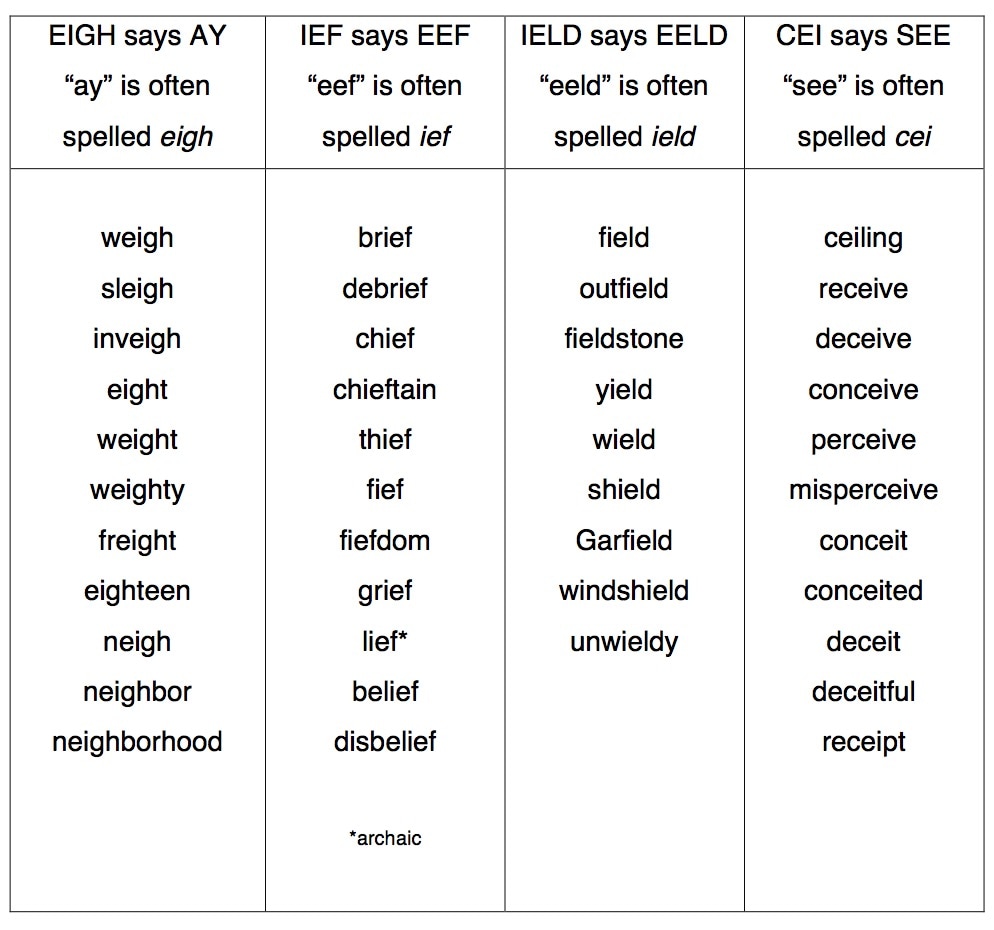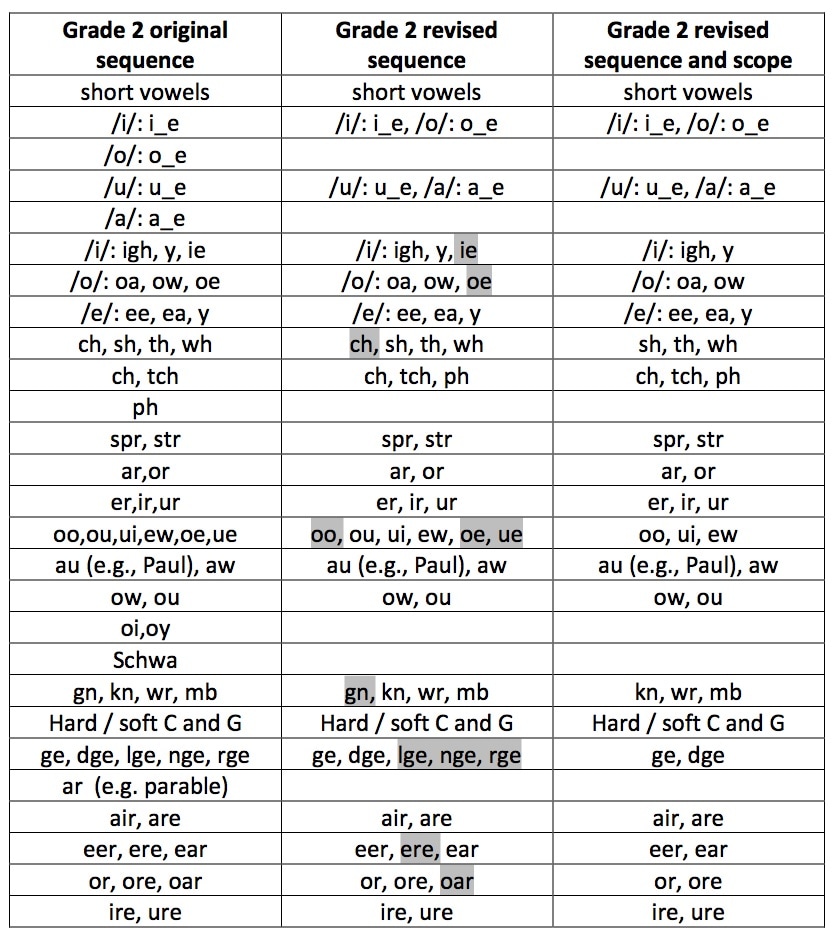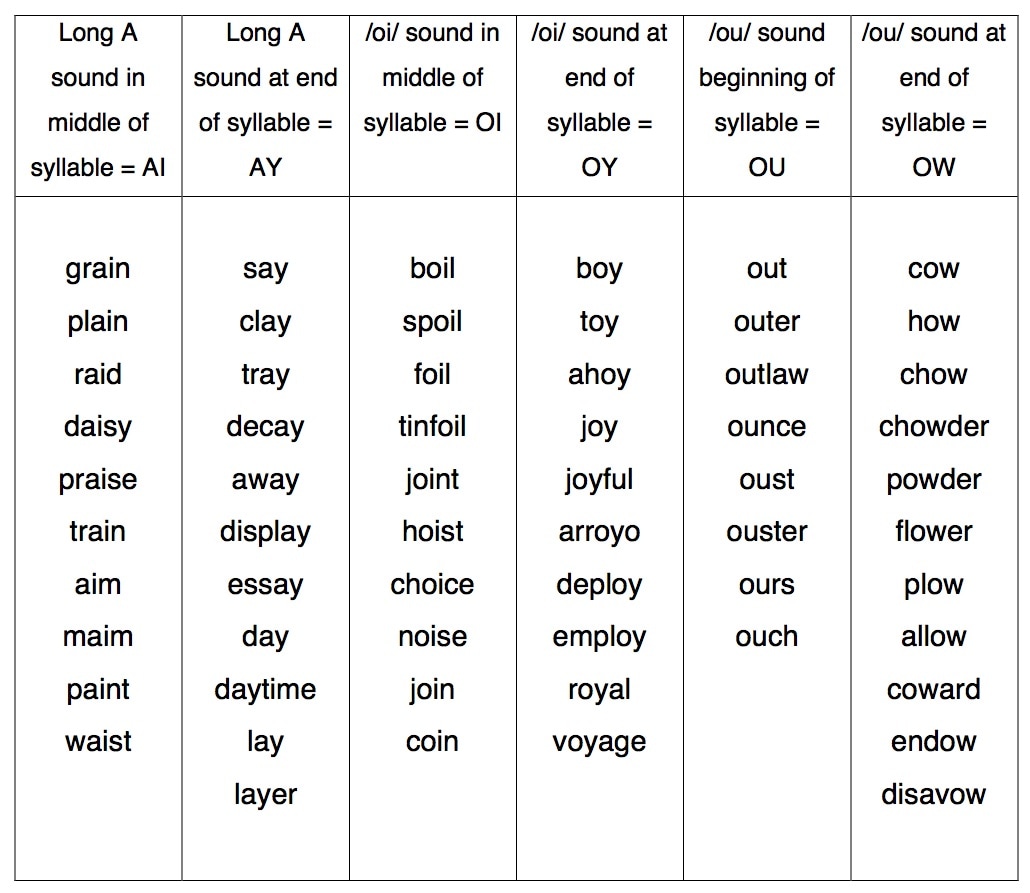|
Slow is not a bad thing, nor is focused. Sure, slowpoke is an unflattering description, and focused can be synonymous with single-minded. But when we look at slow and focused through the lens of instruction, we understand that slowing down and focusing provide us with a chance to thoroughly teach material and give our students opportunities to master critical skills. Adopting a slower pace and a more targeted curriculum allows for richness and depth in lessons. And a slow and focused mindset gives both teacher and students the opportunity to enjoy the learning process.
When it comes to making changes in spelling instruction, a fine place to start is tightening your spelling sequence. Some spelling sequences are simply too long, with too many weekly lessons. The longer the sequence of lessons (25 weeks, 27 weeks, 30 weeks), the more you are forced move quickly to cover all the material. My suggestion is to modify your sequence by strategically condensing its number of weeks or steps. Having fewer lessons gives you time to reteach concepts and patterns when children haven’t mastered them in the first cycle of instruction. When you have space in your sequence to accommodate re-teaching, you won’t need to push kids into a new concept when they have yet to master the previous one. The chart at the end of this post shows a sequence with fewer lessons. I reduced the number of weekly lessons by doubling up on vowel-consonant-e lessons (which allows me to teach how vowel sounds compare and contrast), taking out a lesson that is thoroughly covered in third grade (oi/oy), deleting the schwa lesson, combining ch, tch, and ph into one lesson, and throwing out a lesson that teaches an infrequent spelling pattern (ar, e.g. parable). After you’ve tightened the sequence, narrow the scope. Look over the spelling concepts introduced each week and consider reducing how many you teach in each lesson. If you see a lesson that teaches five or six spelling patterns, identify the low-frequency spelling patterns and take them out. I believe in pruning low-frequency spelling patterns for two crucial reasons. First, there is much to teach and little time to teach it. Why spend valuable time teaching patterns that students don’t often encounter? Many vowel patterns occur infrequently. In fact, the ie spelling of the long i vowel sound and the oar spelling of /or/ occur in fewer than 2% of words with those sounds! So why teach the oar spelling when a second grader might encounter it in oar and board and that’s about it? And why teach the ie pattern when pie is the only word a second grader might write? Teach the correct spelling of these words if and when you need to, not as part of your regular spelling instruction. Second, presenting fewer unknowns in any given lesson is best instructional practice. Teachers often analyze a complex task in order to fully understand it and effectively present it. Once the discrete steps are understood, the task can be taught using the law of one unknown: present one unknown piece of learning, have students practice it, assess students for its mastery, and once it is mastered, move on. But when it comes to spelling, teachers often teach four, five, six, or more spelling patterns or concepts per week. While we probably can’t afford to teach only one unknown pattern,we also shouldn’t allow ourselves to be pushed into presenting more than two to younger children and three or four to older ones. If we present too many patterns or concepts at once, students fail to learn, become frustrated, and may give up. Lessening the cognitive load by presenting fewer spelling concepts in each lesson allows us to build success for students, thereby strengthening the cycle of success, motivation, and learning. In the chart below you can see how I took a 27-step second grade sequence, reduced the number of steps to 21, and then reduced the number of spelling patterns presented in eight of those remaining steps. With a scope and sequence like this, you can move from “memorize-and-move-on” instruction to transformed instruction that produces more enjoyable lessons, gives kids a real shot at spelling mastery, and bolsters the reading and writing skills of struggling learners. If you’ve been following my spelling posts, you’ll know that for the last year I’ve been encouraging teachers to teach students how to spell, not what to spell. Teaching how to spell means moving away from a one-size-fits-all program and towards a philosophy of differentiation. It means showing kids how to think about words by teaching lessons focused on sound, pattern, and meaning. It means teaching students strategies that they can use to spell unknown words. And it means teaching broadly applicable principles of spelling, rather than dozens of narrowly applicable spelling rules. Simply said, spelling rules do little to help children understand how words work. When they have numerous variations and exceptions, they can’t be applied to unknown words. Finally, traditional spelling rules can lead to confusion and spelling errors. Consider these two popular rules: “I before E except after C,” and “When two vowels go walking, the first one does the talking.” “I before E except after C” only applies to words in which the ie combination functions as a vowel digraph that clearly makes a long E sound. For example, the following words can be spelled using I before E: piece, niece, chief, thief, yield, and field. Meanwhile, the words deceit, ceiling, and receive provide the exception to the first half of the rule. But in dozens of other words, the rule fails more than it succeeds! For example, I before E does not work in words such as weigh, sleigh, eight, freight, beige, and vein, or in words such as foreign, forfeit, heifer, and height. Nor does it apply to words in which an adjacent I and E (or E and I) aren’t a digraph, such as in deity and science and their various derivations (deify, deification, prescience, scientific, and so on). Finally, even when a vowel digraph makes the long E sound, there are exceptions to “I before E” Here I am thinking of seize, weird, either, neither, protein, and caffeine, among others. In the end, because “I before E” has so many exceptions, it is rendered mostly useless as a rule. If you want to teach children how to determine if they should have the E first or the I, I’d suggest you start with a broadly applicable principle: certain vowel team patterns are almost always pronounced the same way. This means you should teach the eigh pattern because it almost always says Long A (sleigh, weigh, eight, weight, neigh, neighbor), you should teach the ief pattern because it almost always says EEF (thief, grief, brief, debrief, belief, disbelief), and you should teach the ield pattern because it almost always says EELD (field, yield, wield, shield, Garfield, windshield). Teach your students these patterns and then give them many opportunities to spell, write, and read these patterns in many different settings. The more they spell, read, and write words with patterns, the more they will enter these words into the dictionaries in their brains.  Now let’s consider “when two vowels go walking, the first one does the talking.” Like “I before E except after C,” the “two vowels go walking” rule does little to nothing to help students develop an understanding of spelling patterns within words. How does it teach kids to read or spell the following words, all of which have “two vowels walking:” vein, great, height, their, spread, spoil, pear, noun, piece, heard, rough, and moon? Why not teach this much more useful principle: a sound’s position often determines its spelling. Often, there are many spellings for one vowel sound. Thus, vowel spellings can seem horribly complicated. But when you teach students to be guided by sound position, vowel spellings become more predictable. For example, the /ou/ sound can be spelled ou or ow. Before students have committed whole words like cloud, clown, outer, and flower to the dictionaries in their brains, they need a way to decide how to spell the /ou/ sound. Is it clowd or cloud? We can help kids figure out which spelling to use by teaching them to think about where they hear the sound in a word. In this instance, you might tell your students that if the /ou/ sound is heard at the beginning of a syllable, spell it ou. Then give them examples (ouch, out, oust, and ounce). If /ou/ is heard at the end of a syllable, spell it ow (as in cow, now, chow, eyebrow, powder, and flower). And if /ou/ is in the middle of a syllable, use ou (as in mouse, loud, bounce, joust, and grouch). Finally, teach them an exception to the middle position: if you hear /ou/ in the middle of a one-syllable word and the vowel sound is followed by a /n/ or /l/ sound, then spell it ow (as in brown, gown, howl, and growl). Other vowel spellings that can be determined by sound position include oi and oy, ai and ay, and long vowel sounds at the end of a syllabe in multi-syllable words (most are open syllables, which are simply spelled with one vowel, as in hero, ego, fever, ivy, vital, pilot, navy, favor, bacon, radio, and potato). Using the position of a sound in a word also works for consonant spellings. Thus, when you hear the /f/, /l/, or /s/ sound after a short vowel sound in a one-syllable word, you double the f, l, or s letter (as in fluff, bill, and glass). The main point: a few principles are easier to remember and more broadly applicable than many exception-ridden rules. |
Mark WeaklandI am a teacher, literacy consultant, author, musician, nature lover, and life long learner.
|


 RSS Feed
RSS Feed